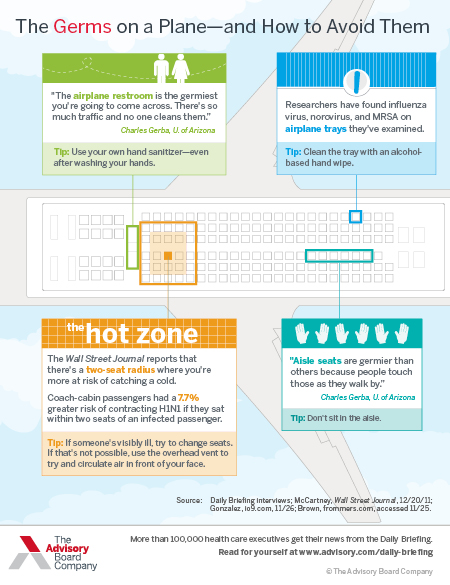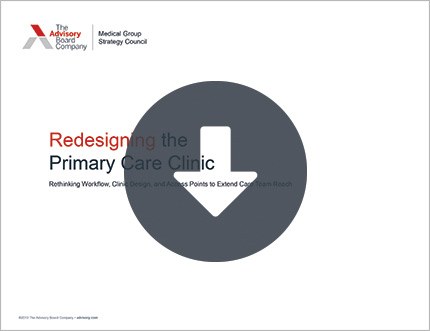Auto logout in seconds.
Continue LogoutThe World Health Organization (WHO) recently released a list of 10 major threats to global health in 2019, with WHO calling air pollution the "greatest environmental threat to health."
About the list
The list provides an overview of the top 10 health threats WHO and the organization's partners will target under a five-year strategic plan that kicks off this year. According to WHO, the plan aims to "ensur[e] one billion more people benefit from access to universal health coverage, one billion more people are protected from health emergencies, and one billion more people enjoy better health and well-being."
The 10 biggest global health threats
Ten of the threats where WHO will focus its attention are:
1. Air pollution and climate change
WHO names air pollution as the biggest environmental risk to health in 2019. Every day, according to WHO, nine in 10 people breathe air that contains microscopic pollutants that can damage their lungs, heart, and brain. The damage leads to diseases such as cancer, stroke, and heart and lung disease that affect seven million people each year—around 90% of whom live in low- and middle-income countries.
Burning fossil fuels, which is the main cause of air pollution, also contributes to climate change—another threat to global health, according to WHO. The organization expects climate change to increase the incidence of malnutrition, malaria, diarrhea, and heat stress, resulting in 250,000 deaths each year between 2030 and 2050.
2. Noncommunicable diseases
Seventy percent of deaths worldwide are due to noncommunicable diseases, such as diabetes, cancer, and heart disease. Those deaths encompass 15 million premature deaths that largely occur in low- and middle-income countries, according to WHO.
The five risk factors that are driving the increase in noncommunicable diseases are tobacco use, alcohol use, physical inactivity, unhealthy diets, and air pollution, WHO notes.
3. Influenza
Another global influenza pandemic is inevitable, WHO says, but experts have yet to predict when it will hit or the severity of its impact.
While WHO is diligent in monitoring flu outbreaks to detect potentially pandemic strains, the world's "defen[s]es are only as effective as the weakest link in any country's health emergency preparedness and response system," WHO says.
4. Fragile and vulnerable settings
Over 22% of the world's population lives in fragile settings, which are defined as places where access to basic health care is minimal, often due to being in a state of crisis and having poor health services.
Places become fragile settings due to prolonged crises, such as famine, conflict, population displacement, and drought, according to WHO.
5. Antimicrobial resistance
Resistance to antibiotics is a direct result of overusing antimicrobials in people, animals that are used for food production, and the environment, WHO explains, and this overuse is not without consequences.
If the overuse continues, antimicrobial resistance might worsen until infections that we currently consider treatable—such as tuberculosis, gonorrhea, and pneumonia—are completely resistant to medicines like antibiotics and antivirals.
For instance, tuberculosis sickens 10 million people each year, but in 2017, almost 600,000 people with tuberculosis were resistant to the medicine rifampicin, and 82% of those patients were resistant to additional antimicrobials.
6. Ebola and high-threat pathogens
When it comes to responding to a high-threat pathogen such as Ebola, context is "critical," according to WHO. The way a high-threat pathogen spreads and impacts a rural area might look very different from the way it would look in urban areas or active conflict zones—making it difficult for health systems and governments to prepare an effective emergency response.
WHO's current watchlist of high-treat pathogens includes Ebola, Zika, SARS, and disease X—a placeholder for any unknown pathogen that could cause an epidemic.
7. Weak primary care
Primary care is supposed to be the most consistent and accessible form of health care a patient has over their lifetime, WHO explains. But when a country lacks adequate primary care facilities, patients lack affordable and comprehensive care for their needs, which can cause everyday health problems to evolve into health emergencies. The problem might stem from "lack of resources in low- or middle-income countries" as well as "possibly … a focus in the past few decades on single disease programs."
8. Vaccine hesitancy
Currently, vaccination prevents between two and three million deaths per year—but it could potentially prevent another 1.5 million deaths if more people were vaccinated, according to WHO.
Despite vaccination being "one of the most cost-effective ways of avoiding disease," WHO notes that more and more patients are challenging the safety and necessity of vaccinations—a trend that could reverse the progress the medical community has made in reducing the prevalence of preventable diseases, according to WHO.
For instance, measles cases increased by 30% worldwide, most likely due to a decrease in vaccinations, according to WHO. But, that increase might not be due to vaccine hesitancy alone. Some patients lack access to vaccinations while others simply don't view getting vaccinated as critical.
9. Dengue
About 40% of the world is at risk of becoming infected with dengue, a mosquito-borne illness that infects 390 million people each year and kills up to 20% of people with a severe form of the disease, according to WHO.
Most dengue cases are reported during rainy seasons in countries with tropical climates, but now that the rainy seasons in these countries are becoming longer, WHO expects the disease to spread to countries with more temperate climates in the near future.
10. HIV
Since the introduction of antiretroviral medication, 22 million people living with HIV are on treatment regimens.
But, some of the people who are most affected by the virus, do not have access to affordable treatment. Currently, 37 million people worldwide have HIV, and one million people die from HIV/AIDS annually according to WHO.
But often, populations considered to be at high risk of contracting the disease, such as sex workers, transgender individuals, men who have sex with men, and people in prison are excluded from potentially life-saving health services (WHO, "Ten threats to global health in 2019," accessed 1/22).
Don't miss out on the latest Advisory Board insights
Create your free account to access 1 resource, including the latest research and webinars.
Want access without creating an account?
You have 1 free members-only resource remaining this month.
1 free members-only resources remaining
1 free members-only resources remaining
You've reached your limit of free insights
Become a member to access all of Advisory Board's resources, events, and experts
Never miss out on the latest innovative health care content tailored to you.
Benefits include:
You've reached your limit of free insights
Become a member to access all of Advisory Board's resources, events, and experts
Never miss out on the latest innovative health care content tailored to you.
Benefits include:
This content is available through your Curated Research partnership with Advisory Board. Click on ‘view this resource’ to read the full piece
Email ask@advisory.com to learn more
Click on ‘Become a Member’ to learn about the benefits of a Full-Access partnership with Advisory Board
Never miss out on the latest innovative health care content tailored to you.
Benefits Include:
This is for members only. Learn more.
Click on ‘Become a Member’ to learn about the benefits of a Full-Access partnership with Advisory Board
Never miss out on the latest innovative health care content tailored to you.


